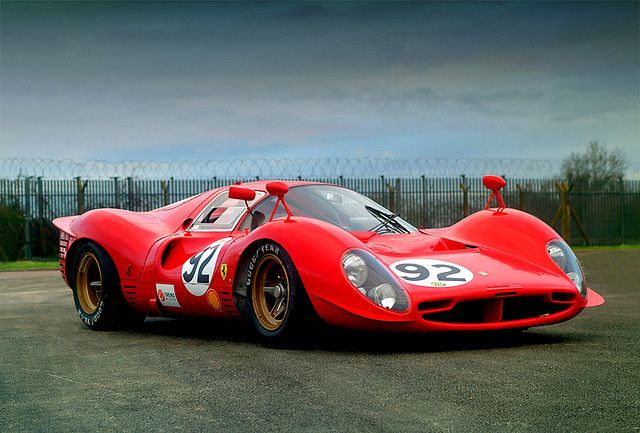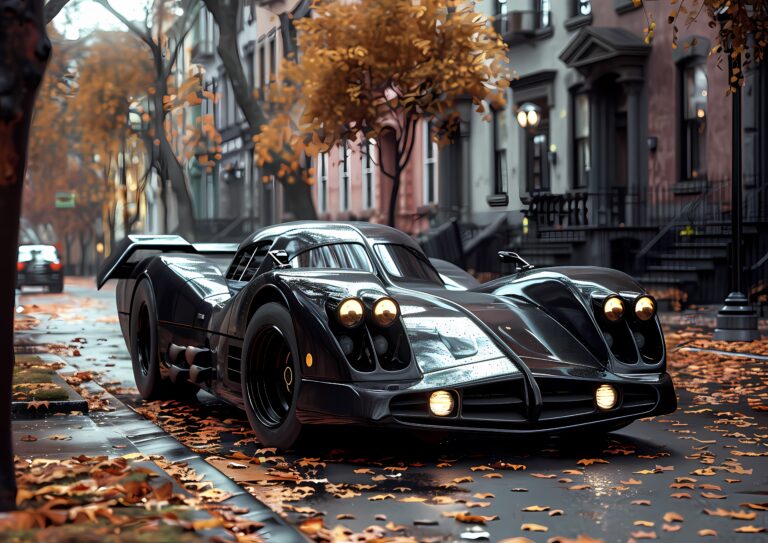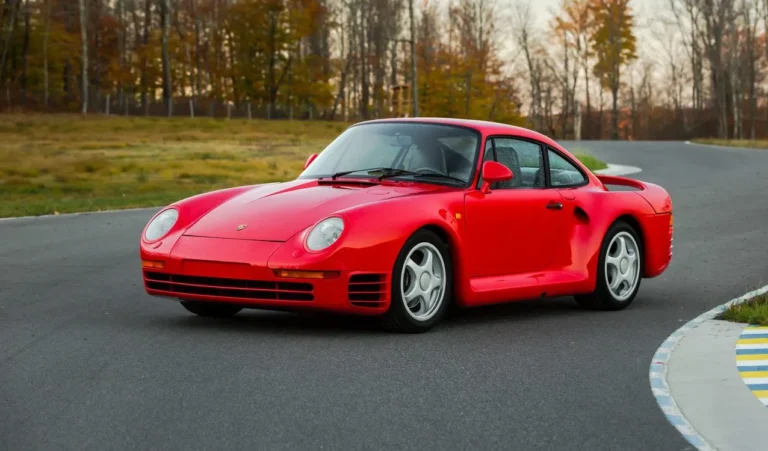
Ferrari 330 P3 Specifications: A Legendary Racing Icon
When discussing the most beautiful and purposeful racing car of all time, the Ferrari 330 P3 has every right to feel very comfortable right at the top. This Italian masterpiece came in the year 1966, made to compete in the top level of motorsport, and most specifically endurance races. The 330 P3 was not manufactured in great quantity, but it had a heavy mark in the history of cars. In this paper, we take an in-depth look at its specification, design, performance, and how relevant it is in the current sports car market.
Historical Significance: A Ferrari Built to Win
Racing Heritage
The 330 P3 is a car that came about as a result of challenging the Ford dominance in endurance racing, especially following the Ferrari defeats in the year 1965. The P3 itself was not particularly successful, but bound by the more successful Ferrari 330 P4, which was to win the Daytona 24 Hours in 1967 in the spectacular fashion of a 1-2-3 finish. That race has made Ferrari a legend in the endurance racing.
The most iconic moment in P3 was at the 24 Hours of Le Mans in 1966, where the car faced off with the GT40 of Ford. Although fraught with problems in the mechanical department, the 330 P3 provided Ferrari with the valuable information that contributed towards the development of its legendary successor.
Rarity
It built only three of these original 330 P3 cars, and it is one of the rarest Ferraris in history. They are rare, thus very costly, especially in history. Museums and collectors all over the world acknowledge the 330 P3 as a crown jewel of the motorsport heritage.
What Kind of Technology Powered the Ferrari 330 P3?
The Ferrari 330 P3 was one of the technological wonders of the 1960s, constructed on the new platform of motor sport technology. Where contemporary hypercars are overloaded with digital technology, the P3 has been slapped together with the analog mastery, diamond-smart engineering, as well as weight-saving innovation to conquer the circuit.
Fuel Injection System
The Lucas fuel injection system was one of the show-stoppers of the 330 P3, and this was a complex system in the context of that era. This system could produce finer fuel delivery than those carburetors that many competing cars were using, which made the system more powerful and efficient. It remains one of the first experiments with the high-tech fueling that Ferrari ever made, which became the path to further achievements.
Mid-Engine Layout
This P3 employed a rear-mid-engined configuration,, which placed the 4.0-liter V12 engine directly behind the driver. Not only did this give better weight distribution, but it also offered a better balance and handling. This design is now the distinctive one of high-performance sports and racing automobiles.
Light Tubular chassis
To make the car as light as possible, but still make it as strong as possible, Ferrari used a steel tubular space frame structure. With fiberglass and aluminum body panels,, the 330 P 3 took about 880 kg (1,940 lbs) to give the remarkable speed and agility.
Aerodynamic Design
Each feature of the shape of the Ferrari 330 P3 body had a purpose. The teardrop low-slung profile of the car reduced drag and with such a wide stance, the car had better grip into corners. Special airflow paths were laid in to fan the huge V12 engine and brakes throughout long endurance runs, as those of Le Mans.
High Performance Suspension and Brakes
The P3 employed disc brakes together with independent suspension in all four wheels to offer optimum control during heavy loading. This enabled the drivers to remain calm even during high speeds on narrow circuits, which created a breakthrough as compared to the other earlier race cars by Ferrari.
Design and Aesthetics: Convergence of Beauty and Function
Old-school Ferrari Styling
The 330 P3, in its essence, reflects the design language of Ferrari in the 1960s. Its long, low and curvaceous body was formed less with an eye on visual drama than aerodynamic efficiency. Brought forth by Pininfarina and constructed by Carrozzeria Fantuzzi, it was a flawless combination of Italian style together with a racing goal. The P3 had wide fenders, a bare-bones cockpit, and distinctive twin headlights, the shape of which was directly related to its purpose.
Aerodynamics
The 330 P3 had advanced aerodynamic designs at its time. The body was, in turn, low drag at high speed, and stabilized. Such features as large air vents, ducts and a low-slung nose provided the best possible airflow over and through the car, cooling the brakes and engine. Its model with the open cockpit (the spider) has underlined its racing genes, but it was maximizing visibility and air flow for the driver.
Performance and Handling: Built for the Track
Engine
The Ferrari 330 P3 was powered in its core by a 4.0-liter V12, working out at a carving of around 420 horsepower at 8,000 rpm. Powered by an engine referred to as the Tipo 593, the car was a successor to the legendary Ferrari Colombo V12 series. The P3, in contrast to its predecessor (the 330 P2), also featured a more advanced (with Lucas) fuel injection system in an attempt to do away with the old-fashioned carburetors and improved throttle control and economy.
Transmission
The greatest innovations in the 330 P3 were the 5- speed manual transaxle gears, as they helped to work on the weight distribution and improve the handling. It was also one of the first responses by Ferrari to place its transmission at the back of the car to balance the car during a race.
Suspension and Chassis
The Ferrari 330 P3 had a semi-monocoque frame made of a mix of steel and aluminum, which made it both strong and light. The front and rear independent suspension, using the double wishbones and coil springs at the four corners, gave handling and stability with ease when taking tight corners. The ventilated disc brakes took care of breaking, and this was considered to be a state-of-the-art feature in the middle of the 60s.
Handling Dynamics and Understeer
Dynamics spoke of the 330 P3 having neutral handling. Ferrari engineers were painstaking in the quest to minimize understeer, which was normal among most of the front-heavy race cars during the time. The novel mid-engine design and huge racing slicks, and perfectly balanced suspension enabled the P3 to be easily agile in corners.
Replicas and Modern Interpretations
Most enthusiasts can not own an original P3 as it is rare. Nevertheless, there area few companies that make high-quality imitations,, and they do have the feel and styling of the original car. The replicas tend to be of a modernity in drivetrains and chassis parts in order to be easily driven, and are usually still based on the classic P3 shape.
Moreover, Ferrari has preserved the memory of such a car as the 330 P3 in the present. It uses in its modern sports cars the technique and design that recalls the memory of the past. Cars such as the Ferrari Daytona SP3 and other members of a series called Icon can be seen as an ode to the P3 era, as their design is a combination of retro design with the latest technologies.
Why is the Ferrari 330 P3 Considered the Greatest Racing Cars?
The renown of 330 P3 is a result of its famous participation in the World Sport scar Championship and the world-famous Le Mans competitions. It was the response of Ferrari to the American-based monopolization of the racing environment of the 1960s, especially the intense competition against Ford GT40.
Although the P3 failed to bring home a Le Mans win, it signified an innovation in the Ferrari race car development- a tubular chassis, a new V12 engine, and a striking balance with the mid-engine. It proved itself great as it was a foundation for the more successful 330 P4.
Will the Ferrari 330 P3 Change the modern collector car market?
Yes, absolutely. The rarity of the original Ferrari 330 P3 and its racing background make them practically priceless. With the collector car market becoming ever more focused on both provenance and heritage, the 330 P3 remains an appreciating asset.
It also creates a demand for high-quality imitations. Accurate replicas based on period-appropriate styling and contemporary running gear are great items for collectors wanting to enjoy the feel and appearance of a 330 P3, but have no interest in a multi-million-dollar original.
Final Thoughts
To sum up, the Ferrari 330 P3 was a genius piece of Italian engineering and styling. The performance and speed of the car were focused on every detail, starting with a powerful V12 engine and an accurate gearbox. The car was also designed according to aerodynamics, considering the aerodynamic bodywork and the lightweight chassis. Its superiority on the racetrack established Ferrari as an authority in endurance racing, and the P3 as its presence in the history of automobiles.
It is unlikely that the Ferrari 330 P3 can be called small due to the fact that its racing career was rather brief, and yet its legacy is not. It defined the future of the motorsport activities of Ferrari, and it inspired generations of sports cars. Its eye-catching design, Revolutionary technology and emotional appeal to the race bring its status of pure performance.
Frequently Asked Questions
What is the production number of the Ferrari 330 P3?
Just three customized Ferrari 330 P3 were produced, which made it among the rarest race cars in the history of Ferrari.
What is the engine of the Ferrari 330 P3?
The 330 P3 is equipped with a 4.0-liter V12 engine with more than 420 horsepower.
Is the Ferrari 330 P3 available to purchase today?
Original models do not sell at all to the public, although at the top end, the replicas will be offered by specialized builders.
What makes the Ferrari 330 P3 so popular?
It is famous due to its participation in the rivalry of Ferrari and Ford races in the 60s, and due to its innovative design and high performance.
What is the price of a Ferrari 330 P3 replica?
A replica may cost anything between 250,000 dollars to more than 1 million dollars, depending on its build quality and accuracy.



